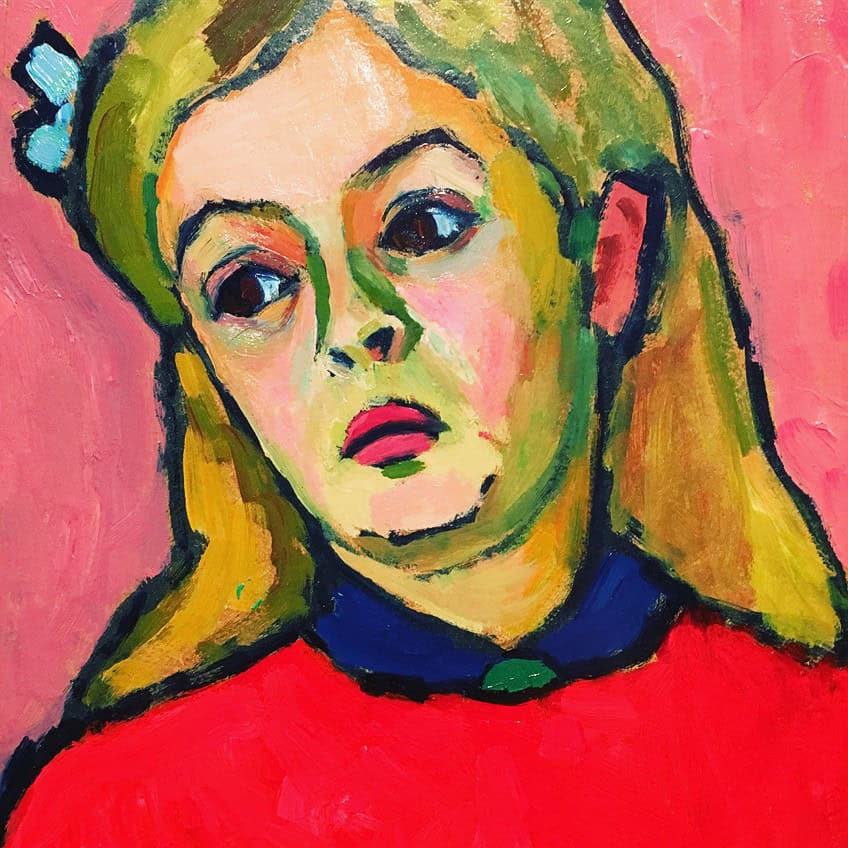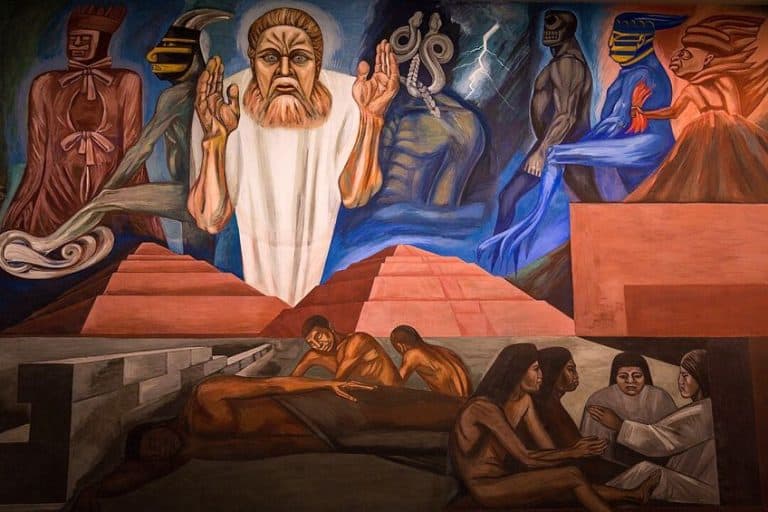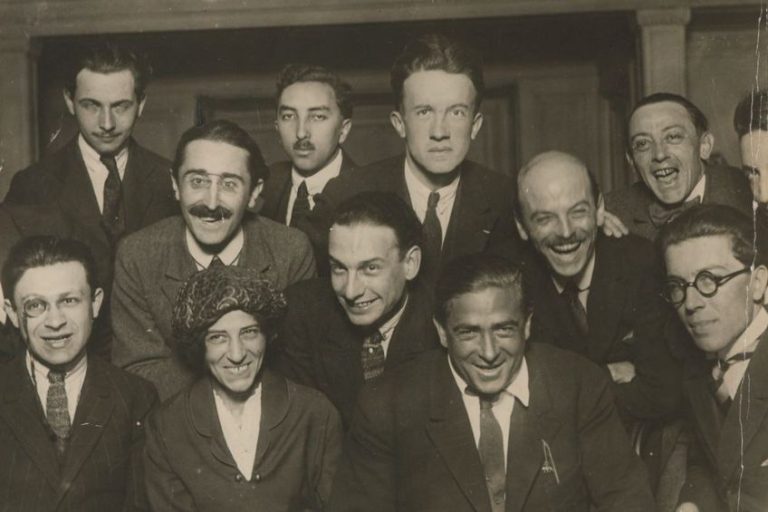Gabriele Münter – The Woman Behind Der Blaue Reiter
Gabriele Münter was a pioneering German Expressionist painter and a central figure in the early 20th-century avant-garde movement. She was a founding member of the influential Der Blaue Reiter (The Blue Rider) group, which sought to break away from traditional artistic conventions and explore new forms of expression. Münter’s work is characterized by bold use of color, simplified forms, and a deep emotional resonance that captures the essence of the landscapes and people she depicted. Her contributions to modern art, often overshadowed by her male counterparts, have gained increasing recognition, highlighting her as a key figure in the development of Expressionism.
Key Takeaways
- Gabriele Münter was a key figure in German Expressionism and a member of Der Blaue Reiter.
- Her art was influenced by folk art, non-western art, and her collaborations with Wassily Kandinsky.
- Münter’s vibrant and bold style left a lasting impact on modern art.
Early Life and Influences
| Birth | February 19, 1877 |
|---|---|
| Death | May 19, 1962 |
| Place of Birth | Berlin, German Empire |
| Genre of Work | Painting |
Gabriele Münter, a pivotal figure in German Expressionism, was a founding member of the avant-garde group Der Blaue Reiter. Her deep collaboration with Wassily Kandinsky and extensive travels across Europe dramatically shaped her distinctive style.
She blended influences from folk art, non-western art, and Kandinsky into her landscapes, portraits, and woodcuts.
Born in Berlin in 1877, Münter’s early education and artistic influences played significant roles in her development as an artist. Her work showcased a range of techniques and styles that captured the spirit of the Munich avant-garde. Münter’s artistic journey was marked by her use of vibrant colors and bold forms, distinguishing her works in the Expressionist movement.

Despite the challenges of her era, Münter’s legacy endures through her compelling artworks and contributions to modern art. Enthusiasts and scholars alike continue to explore her innovative approach and her impact on the art world.
Artistic Beginnings and Phalanx
Münter was born in Berlin in 1877. Her artistic journey began in her youth, partly influenced by her musical training in piano. She pursued formal art education in Munich, enrolling in the Phalanx School in 1902. At Phalanx, Münter quickly distinguished herself.
Within a year of joining, she participated in still-life classes and demonstrated a strong inclination toward expressionist techniques, laying the groundwork for her unique style.
Wassily Kandinsky and Der Blaue Reiter
Münter’s relationship with Wassily Kandinsky profoundly influenced her career. The two met at the Phalanx School, where Kandinsky was an instructor. They not only shared a studio but also lived together for a time. Their partnership was both personal and professional.

In 1911, Münter co-founded the expressionist group Der Blaue Reiter alongside Kandinsky and other artists. The group focused on avant-garde art and bridged different artistic ideas across Europe, incorporating influences from various regions, including Munich and Paris.
Travel and Artistic Development
Münter was an avid traveler, which enriched her artistic perspective. She traveled extensively throughout Europe, including stints in Paris and Scandinavia, allowing her to experience diverse artistic milieus. These travels facilitated her exploration of different styles and techniques. During her travels, she also amassed a significant collection of Bavarian folk art. This collection had a notable impact on her work, infusing it with traditional motifs and enhancing her creative palette.
This period of discovery and integration was crucial in shaping her multifaceted oeuvre.
Artistic Style and Techniques
Gabriele Münter’s artistic style evolved through her engagement with German Expressionism, her unique use of color and composition, and her diversification into printmaking and sculpture. Each area showcases distinctive characteristics and techniques that define her work.
Engagement With German Expressionism
Münter was a significant figure in German Expressionism and a founding member of the Der Blaue Reiter group. Her work displayed bold colors and dramatic, emotional subjects. Strong influences from Matisse, Gauguin, and Van Gogh were evident in her art. Münter often depicted landscapes and scenes from Bavarian folk life. These works showcased her deep exploration of the human condition through vivid colors and expressive brushwork.

Color and Composition
Color and composition were central to Münter’s work. She employed a bright palette and simplified forms, pushing the boundaries of abstract art. One notable technique was the use of a palette knife, which added texture and depth to her paintings.
Her landscapes were often saturated with intense colors that emphasized mood rather than realistic depiction.
Diversification into Printmaking and Sculpture
In addition to painting, Münter explored printmaking and sculpture. She experimented with linocuts and woodcut techniques, which allowed her to create stark, striking images. Münter also engaged in reverse-glass painting, a method that creates a luminous, translucent effect. Sculptural work remained a smaller portion of her oeuvre but showcased her willingness to experiment and diversify her artistic practice.

Key Works and Exhibitions
Gabriele Münter’s artistic journey achieved prominence through her landscapes of Murnau and the Bavarian Alps, her pivotal role in various avant-garde movements, and subsequent retrospectives that brought recognition to her contributions to German Expressionism.
Landscapes of Murnau and the Bavarian Alps
Münter’s landscapes of Murnau and the Bavarian Alps stand out for their vibrant colors and strong lines. These works, created during her time with fellow artist Wassily Kandinsky, capture the essence of their surroundings with emotional intensity. Her painting, Jawing, epitomizes this style, blending simplicity with profound depth.
The use of intense, vivid colors in her depictions of the natural environment emphasized her unique expressionist approach.
Contributions to Avant-Garde Movements
Münter made significant contributions to avant-garde movements in the early 20th century. As a founding member of Der Blaue Reiter, she helped shape the group’s aesthetic vision, which sought to explore spiritual dimensions through art.

She also participated in the Neue Künstlervereinigung München, where she exhibited her distinct style alongside noted contemporaries like Kandinsky and Franz Marc. Her involvement extended to international exhibitions, including the Salon d’Automne in Paris.
Retrospectives and Recognition
In her later years, retrospectives honored Münter’s extensive body of work. These exhibitions showcased her versatility and impact on expressionism and modern art. Institutions like the MoMA and Museo Nacional Thyssen-Bornemisza hosted significant shows, reaffirming her status as a key figure in art history. The Gabriele Münter- und Johannes Eichner-Stiftung has played a crucial role in preserving and promoting her legacy.
Notably, the Münter House in Murnau displayed her works alongside rare pieces from her collection.
Legacy and Impact
Gabriele Münter significantly influenced German Expressionism and shaped the role of women in the early 20th-century art world. Her innovative techniques and contributions to Der Blaue Reiter had a lasting impact on subsequent artistic movements and generations.
Role as a Female Artist in the Avant-Garde
Gabriele Münter emerged as a crucial figure in the Munich avant-garde scene. As a founding member of Der Blaue Reiter, she defied societal norms by successfully engaging in an art world dominated by men. Münter not only created groundbreaking works but also provided unique perspectives that enriched the group’s collective output.

She was one of the few women to receive formal training, thanks to institutions like the women’s school and Munich Women Artists’ Association. Her success opened doors for future female artists, demonstrating their capabilities and contributions in avant-garde movements. Münter’s works often reflected her innovative spirit through experimentation with form and color. Her career served as an inspiration, portraying the resilience and capabilities of female artists in a male-dominated field.
Influence on Future Generations
Münter’s impact extends beyond her lifetime, influencing future generations of artists. Her work spanned more than six decades, showcasing continual evolution and adaptation. Through her contributions to abstraction and non-objective art, she paved the way for modernist movements.
Her role in Der Blaue Reiter helped to promote non-representational art, influencing the broader trajectory of European and global art. Münter’s legacy resonates in the continued recognition and study of her work, and she remains a pivotal figure in art history as an exemplar of innovation and creativity. Future generations of artists have drawn inspiration from her, recognizing her as a trailblazer who expanded the boundaries of what was possible for female artists.
Gabriele Münter’s legacy as an artist is marked by her profound impact on the Expressionist movement and her commitment to innovation in both style and subject matter. Despite the challenges she faced as a woman in the male-dominated art world, Münter’s work continues to resonate for its boldness, emotional depth, and visionary approach. Her contributions to the development of modern art are now recognized as essential, ensuring that her influence endures and her art continues to inspire future generations. Through her vibrant and evocative paintings, Münter’s place in art history is firmly secured as a trailblazer of 20th-century modernism.
Frequently Asked Questions
What Distinguishes Gabriele Münter’s Contribution to the Expressionist Movement?
Münter played a key role in the Munich avant-garde and was a founding member of the expressionist group Der Blaue Reiter. Her bold use of color and form helped to define the movement’s aesthetic. Her artworks often blend traditional motifs with modernist techniques.
Which Artistic Techniques Did Münter Frequently Use in Her Work?
Münter was known for her exploration of color and simplification of form. She frequently used vibrant hues and bold lines to capture the essence of her subjects. She also experimented with techniques such as woodcut printing and various forms of painting, showcasing her versatility and creativity.
What Are Some Notable Works by Gabriele Münter and Where Can They Be Viewed?
Significant works by Münter include Kandinsky and Erma Bossi (1909) and Portrait of Marianne von Werefkin (1909). Many of her works are housed in prominent museums such as the Städtische Galerie im Lenbachhaus in Munich and the Museum of Modern Art (MoMA) in New York.
In What Ways Did Gabriele Münter’s Work Impact Female Artists in the Early 20th Century?
Münter’s success and visibility provided a model for other female artists seeking recognition amidst a predominantly male art world. Her dedication to her craft, despite societal challenges, inspired many women to pursue and sustain careers in the visual arts. Her work continues to be a testament to female talent and perseverance.
Isabella studied at the University of Cape Town in South Africa and graduated with a Bachelor of Arts majoring in English Literature & Language and Psychology. Throughout her undergraduate years, she took Art History as an additional subject and absolutely loved it. Building on from her art history knowledge that began in high school, art has always been a particular area of fascination for her. From learning about artworks previously unknown to her, or sharpening her existing understanding of specific works, the ability to continue learning within this interesting sphere excites her greatly.
Her focal points of interest in art history encompass profiling specific artists and art movements, as it is these areas where she is able to really dig deep into the rich narrative of the art world. Additionally, she particularly enjoys exploring the different artistic styles of the 20th century, as well as the important impact that female artists have had on the development of art history.
Learn more about Isabella Meyer and the Art in Context Team.
Cite this Article
Isabella, Meyer, “Gabriele Münter – The Woman Behind Der Blaue Reiter.” Art in Context. September 30, 2024. URL: https://artincontext.org/gabriele-munter/
Meyer, I. (2024, 30 September). Gabriele Münter – The Woman Behind Der Blaue Reiter. Art in Context. https://artincontext.org/gabriele-munter/
Meyer, Isabella. “Gabriele Münter – The Woman Behind Der Blaue Reiter.” Art in Context, September 30, 2024. https://artincontext.org/gabriele-munter/.











